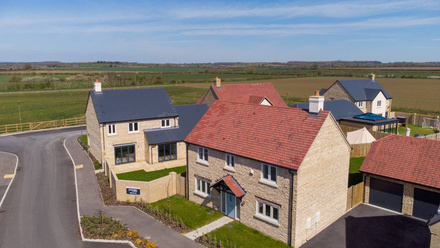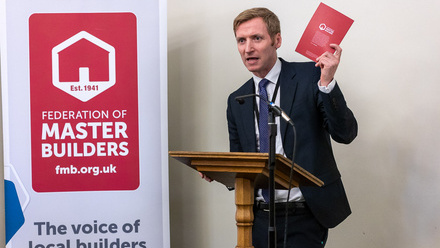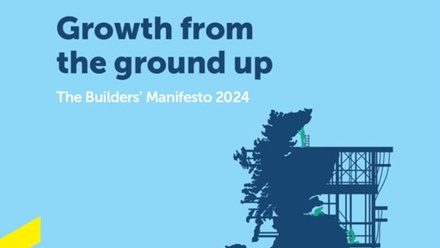Recently released house building statistics show:
- In 2021-2022, 5,273 new dwellings were completed in Wales. This compares to….
- 4,616 in 2020 – 2021 and
- 6,037 in 2019 – 2020
Whilst on the face of it, this year saw an uplift in the number of homes built from last year, this is against a backdrop of a house building sector that was significantly restricted by the Covid pandemic in 2020-2021. Of course, it’s good to see the stats moving in the right direction, but we must aspire to surpass pre-pandemic levels of house building if we are to meet demand.
The consequences of failing to deliver enough new housing in Wales
According to Welsh Government estimates, we need to build between 6,200 and 8,300 additional dwellings every year to meet demand. These levels are clearly not being delivered, which, year-on-year, has now become the norm.
This is a major problem with far-reaching consequences. Recently released statistics show that 8,000 individuals in Wales are currently in temporary accommodation with 70,000 households on social housing waiting lists. In addition, house prices are increasingly unaffordable to many, with the average price in Wales recently reaching its highest ever figure of £240,000, an 11.5% rise from this time last year. Providing people with access to a long-term and stable home has been shown to significantly improve results in core areas of people’s lives such as their health, wellbeing, and educational attainment.
What’s stopping new Welsh housing development?
Now onto the million-dollar question which has been baffling us all for years: if the Welsh Government, the general public, and the house building sector all want to see more homes built, what’s stopping us from building more homes?
With this shared consensus, you’d like to think that there’s a straightforward answer out there, but unfortunately this is far from the case. I won’t attempt to provide an all-encompassing holistic answer to this age-old dilemma, but what I will do is to provide the viewpoint of the SME house builder in Wales. This is what members have been telling me needs to happen to allow them to build more homes:
- We need a fit-for-purpose planning system. Our current planning system does not lend itself to promote housing development. It is fraught with cost, uncertainty, and delay, making the delivery of new homes exceptionally challenging, particularly for SMEs. Planning departments need to be better resourced to ensure that they have the tools required to provide an adequate service, which, too often, is not the case. There needs to be more proportionality between the size of development and planning burden placed upon the developer. It makes no sense that a 10-dwelling site has the same planning requirements as a 1,000-dwelling site.
- More viable land needs to be made available, particularly smaller sites. Our members feel that smaller sites are too often overlooked during the process of allocating land in the Local Development Plan and that the authorities give priority to the larger sites that perhaps take less resource to manage.
- SMEs need better access to finance early-on in the house building process. Revenue only starts flowing in when houses are sold, therefore the cash only goes one way until then. Members tell me that the Development Bank of Wales offers an excellent service for backing our SMEs during the build process, but they can only lend once planning has been granted. Getting to the phase where planning has been granted is expensive, and there’s very little access to finance at this early stage. This is less of a barrier to existing house builders as they can bankroll sites from revenue from their previous sites. However, it is an immediate barrier for those trying to enter the market.
How new environmental regulations have impacted housing development
A painful twist in the story of recent housing delivery is that changes to environmental regulations were introduced in January 2021 that further restricted the sector’s ability to build new homes. These changes focus on the level of phosphates that exist in our rivers.
‘Phosphates?!’ I hear you ask! It’s a very complex issue so bear with me as I try to summarise it as succinctly as I can. Phosphates are natural occurring minerals, and amongst other sources, are found in human waste. As a result, new housing development is seen as an activity that could add to river phosphate levels and as a result development has been halted in the areas surrounding rivers that have phosphate levels that are deemed to be too high. Around 2,500 housing plots are currently stalled in Wales due to the new phosphate targets - for context, this is nearly half the number of homes delivered in the whole of Wales last year.
It is critical that our rivers are in good health, and I therefore have no quarrel with these new targets; they are necessary. Our challenge is to work closely with stakeholders to develop both short and long-term workable solutions to this matter. Just as protecting our rivers is an absolute must, we must also provide homes for our people.
There will likely be a drop in house building numbers until this matter is resolved. In the meantime, Welsh Government and others should not use the issue as a ‘get-out-of-jail-free-card’ for failure to meet our housing need. We were failing to meet demand before the phosphates matter came along. We should not take our eye off the ball from some of the other major barriers that continue to stifle the sector’s ability to build.
Share your views on Welsh housing development challenges
What are your views on the housing crisis? Get in touch - I’d love to hear from you.







